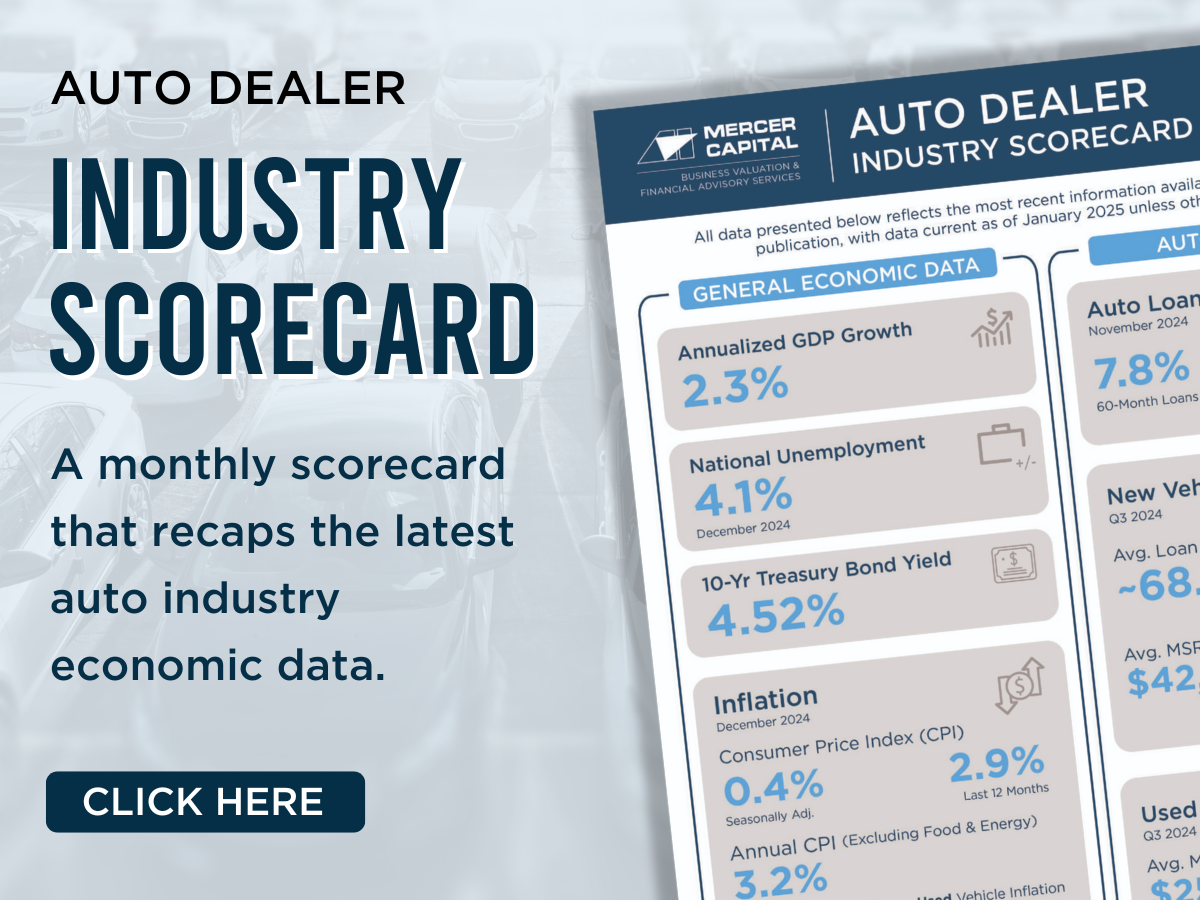Compared to last year, interest rates have significantly increased since the Federal Reserve began raising rates in March 2022. Inventories have also improved as the industry works through its supply chain issues. These shifts in economic trends are expected to have an impact on many aspects of auto dealer operations. In this week’s post, we talk about floorplan interest income and pose some important questions: What is floorplan interest expense, and what are floorplan credits? How have floorplan credits turned into an unlikely profit center for dealers? Can we expect this trend to continue amid changing conditions?
Blog
Auto Dealer Valuation Insights
Regular updates on issues important to the Auto Dealer industry
Auto Industry Trends to Monitor in 2023
An Automotive Potpourri
January is a month to review statistics from the prior year and to make predictions for the new year. The automobile industry is no different. In this post, we tackle a potpourri of trends to monitor in 2023, including new and used vehicle prices, electric vehicles, connected cars, and SAAR predictions for 2023.
Six Things to Consider When Working with a Business Appraiser
We’ve turned the page on 2022, another year defined by challenges, record profitability and elevated valuations for auto dealers. As we enter 2023, there will likely be unique challenges and opportunities for auto dealers regarding business valuations. We will dedicate future posts to the discussion of these opportunities from the perspective of succession planning in an environment with sunsetting tax exemptions and depressed asset values, especially if interest rates continue to rise and profitability subsides in 2023.
We previously discussed six events that could trigger the need for a business valuation. In this week’s post, we discuss six things that attorneys and auto dealers should consider when selecting or working with a business appraiser.
December 2022 SAAR
The December SAAR was 13.3 million units, down 5.3% from last month but up 4.7% from this time last year. This month’s SAAR data is a bit concerning for the auto industry, as supply chain improvements do not seem to be translating to improvements in the sales pace of vehicles as quickly as the last couple months have indicated. Over the past month, it has seemed more and more likely that plummeting trade-in equity, persistently high interest rates and growing fears of an economic recession are keeping the sale of automobiles low, which could spell trouble for auto dealers that have thrived in a high price environment over the past eighteen months.
‘Twas the Blog Before Christmas…
2022 Mercer Capital Auto Dealer Holiday Poem
It has become a tradition for the Auto Dealer team at Mercer Capital to end the blog year with a “unique” summary of industry events, riffing off Clement Clark Moore’s classic “A Visit from St. Nicholas.” We hope all of you enjoy the holiday season. We look forward to hearing from you in 2023.
November 2022 SAAR
The November 2022 SAAR was 14.1 million units, down 6.5% from last month but up 7.9% from November 2021. Compared to this time last year, vehicle availability has significantly improved, and there seems to be hope around the industry that the auto inventory crunch is in its final act. If true, this would be good news for auto dealers and consumers alike, as more units on dealer lots seem to be the first step in a “return to normal” for the industry. While it’s clear that a year-over-year improvement is present, a dip from last month’s SAAR figure may raise red flags for some of our readers. However, an additional selling weekend in October and a marginal uptick in sales due to natural disasters in the Gulf of Mexico were both tailwinds that supported a surprising improvement in the SAAR last month. Given this perspective, November 2022’s SAAR seems to return to the larger trend of improving conditions.
The Top 2022 Blog Posts from Auto Dealer Valuation Insights
Despite existing operational headwinds and new economic headwinds in 2022, auto dealers continued to produce record profits. As we wind down the year and look towards next year, we look back to see what was popular with you—our loyal readers. Here are some of your favorite posts from 2022.
Auto Brands and the 2022 World Cup
Who Are the Top Ranked Countries?
This week we compare the FIFA rankings of the world’s largest vehicle producing countries. Spoiler alert: there is no correlation. But in our research, we found plenty of interesting nuggets and talking points. We also discuss top vehicle producing nations that did not qualify for the World Cup, nations that did qualify but do not have a large presence in auto production. We also get into brand presence and Blue Sky multiples of these nations’ vehicle brands.
Meet the Team
Harrison Holt
In each “Meet the Team” segment, we highlight a different professional on our Auto Dealer Industry team. This week we highlight Harrison Holt, Financial Analyst. We hope you enjoy getting to know us a bit better.
October 2022 SAAR
The October 2022 SAAR was 14.9 million units, up 12.7% from October 2021 and up 9.8% from last month. This month’s SAAR comes as a bit of a surprise, as the last three months’ sales pace settled at around 13.4 million units and seemed to have stabilized at a short-term equilibrium. However, meaningful improvements in inventory balances and other tailwinds like natural disaster-related demand contributed to the second-highest monthly SAAR total this year. For perspective, from 2014-2019, there were zero months where SAAR was below this recent high in the inventory-constrained 2022.










